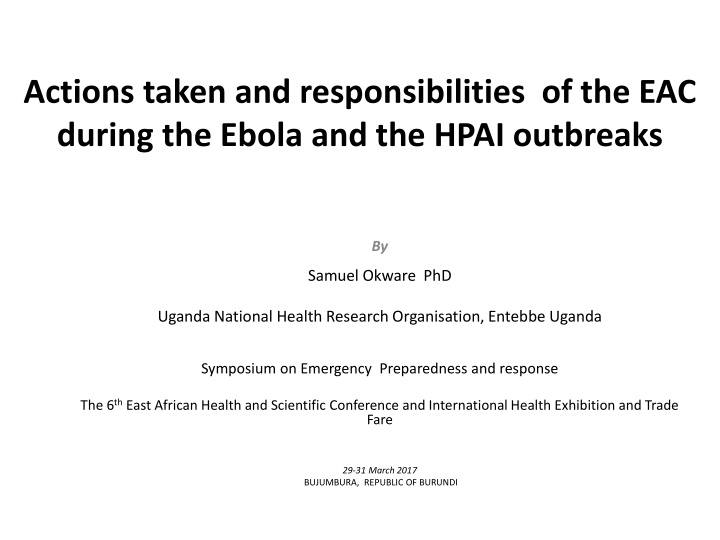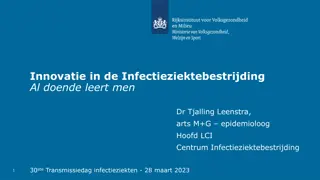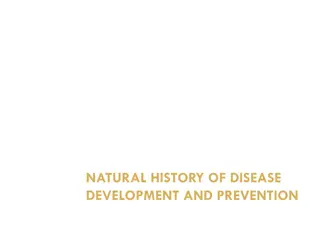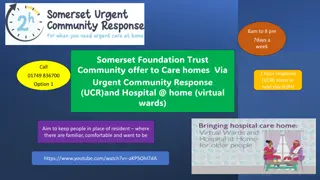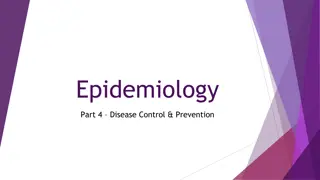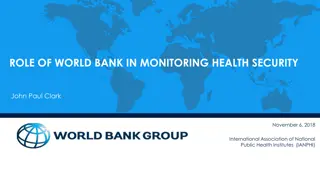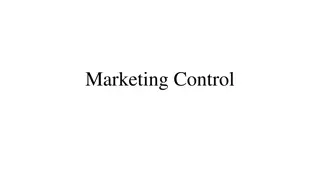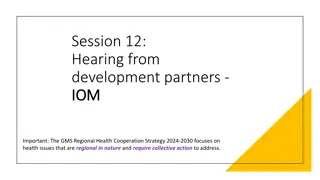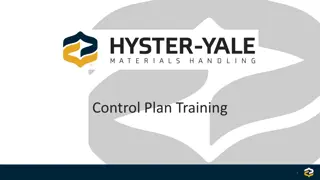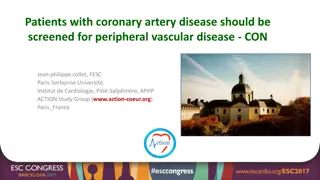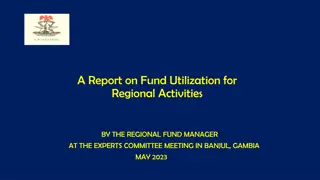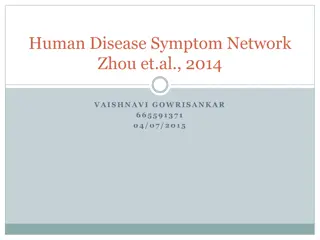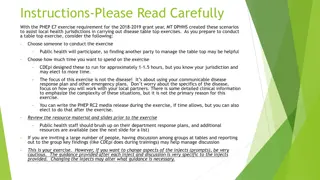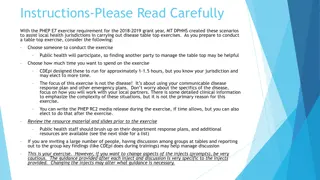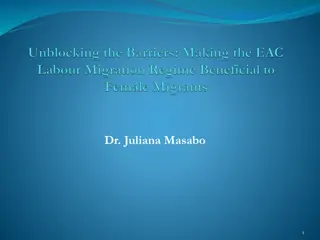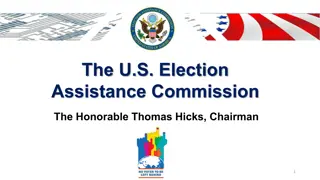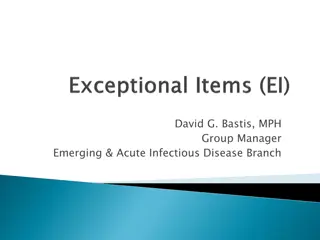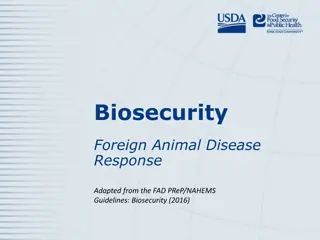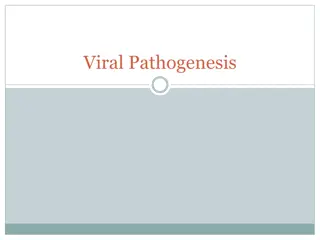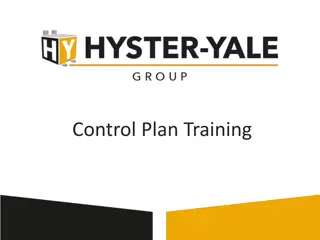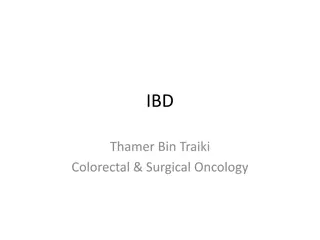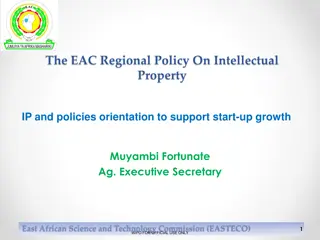EAC Regional Initiatives for Disease Control and Response
The presentation outlines the actions taken and responsibilities of the East African Community (EAC) during the Ebola and Highly Pathogenic Avian Influenza (HPAI) outbreaks. It discusses regional initiatives for disease control, encounters with Ebola and HPAI, lessons learned, and the EAC's response to emerging and reemerging infections and threats. The experience of HPAI since 1977, the formation of EAIDSNet in 2001, and EAC initiatives in strengthening cross-border disease prevention are highlighted.
Download Presentation

Please find below an Image/Link to download the presentation.
The content on the website is provided AS IS for your information and personal use only. It may not be sold, licensed, or shared on other websites without obtaining consent from the author.If you encounter any issues during the download, it is possible that the publisher has removed the file from their server.
You are allowed to download the files provided on this website for personal or commercial use, subject to the condition that they are used lawfully. All files are the property of their respective owners.
The content on the website is provided AS IS for your information and personal use only. It may not be sold, licensed, or shared on other websites without obtaining consent from the author.
E N D
Presentation Transcript
Actions taken and responsibilities of the EAC during the Ebola and the HPAI outbreaks By Samuel Okware PhD Uganda National Health Research Organisation, Entebbe Uganda Symposium on Emergency Preparedness and response The 6thEast African Health and Scientific Conference and International Health Exhibition and Trade Fare 29-31 March 2017 BUJUMBURA, REPUBLIC OF BURUNDI
Presentation outline EAC regional initiatives for Disease control Regional encounters with Ebola and HPIA Lessons learnt Conclusion
Emerging and remerging infections and threats Disease Year Country Cases /deaths Locality Comments Ebola 2000-12 Uganda >500/300 Gulu Luwero Bundibugyo Sudan ebolavirus Zaire ebolavirus Bundibugyo ebolavirus Marburg 2007 Uganda >50/40 Kamwenge HPAI 2007 2010 Uganda Central North East and South 2017: new c Outbreak 1977; transmission migratory birds and poultry ; CFR 60% -2017 new outbreak Wild Polio virus 2006 2009 Kenya 16/1 NE , Garisa, imported; Turkana; Genetically linked to strains in Uganda Malaria; HIV Re-emerging outbreaks
HPAI experience 1977- identified in Hong Kong- Pandemic Transmission poultry and migratory birds Africa Egypt -Uganda, South Sudan : over 200 cases Case fatality - >60% 2007- Field simulation in Busia border 2017 Uganda new cases
EAIDSNet objectives Formed in 2001 to support partner states to respond shared public health threats Recognition of fragmented disease strategies and weak lab capacity Zoonosis Build cross border capacity for IDS and control Improve quality data and harmonise IDS Strengthen sharing of information and data Share capacity and expertise Constant exchange expertise andbest practices
EAIDSNet initiatives 2008: EAC implemented Regional Project to strengthen cross border Dis Prevention (H &A) 2014 Ministerial and stakeholder multisectoral conference endorsed Reg. EPR Strategy for EVD ; Strengthened cross border institutions/collaboration through ONE HEALTH approach Joint outbreak investigation and management-cross border communities- more vulnerable Advice - Regulation of human and commercial traffic Web portal- linking Human and Animal health EAPHL network (recent) Field training- simulation eg Busia border
National Response: Ebola task force What and Where do you fit? Environment Investigation Contacts Patients Surveillance 1: Epidemiology Forecasting Dead/burial 2. Isolation/care Leadership Coordination & Logistics Task force s E 4. Laboratory Clinical lab 3.Education Community Diagnosis Packaging Relatives Health staff INTERVENTION Authorities Media
Tools for community mobilisation Mass media e.g. radio/tv .. Home visits door to door Discussion groups, rallies Cascade training to districts..villages IEC Materials: posters, Rumour management: work with media, press
Kenya Community targeted in Masindi district, Uganda, 2000 Escape of contacts: 7 to Kenya; 1 to Masindi dist 73 members extended index family in Masindi Transmission prevented beyond index family by early case detection and isolation imposed by the community Attack rate 19/73 (26%) CFR in index family 15/19 (79%) 2nd generation lost 8/19 (50%) Only 1 case in general population occured Left 30 orphans http://www.biomedcentral.com/content/figures/1471-2334-11-357-4-l.jpg Enforcement : Communityleadership v. police Source: Borchert M 2011, and personal notes, 2000
Cross border Efforts against Ebola,2000 2001- Ebola contact Kenyan relative escaped Gulu to W Kenya Three hormes: Busia,Malaba Bungoma Acholi diaspora meeting Nairobi drama Human and commercial traffic slowed Stigma Fig 2
Cross border Field simulation against HPAI, Busia, 2010 Fig 2 Tested EPR cross border response agaist HPAI Busia Synergy possible: multisectoral teams and expertise
Lessons learnt EAIDSnet regional strategy has potential One health approach promotes regional synergy teams and expertise Information sharing- permanent cross border meetings Lab capacity - silver lining Centers of Excellence Inventories Empathy 16
CONCLUSION EAIDSnet regional initiative has potential but needs nurturing and expansion in scope and content 17
Acknowledgement Members of The Ebola Task Force, Uganda Government and the people of Uganda and EAC partners EAC Partner States- bilateral and international Ministry of Health, Uganda Ministry Health, EAC Partner States Ministries of Agriculture and Veterinary services, Partner States Ministry of EAC Affairs Health care workers Colleagues & friends who died in the line of duty 18
